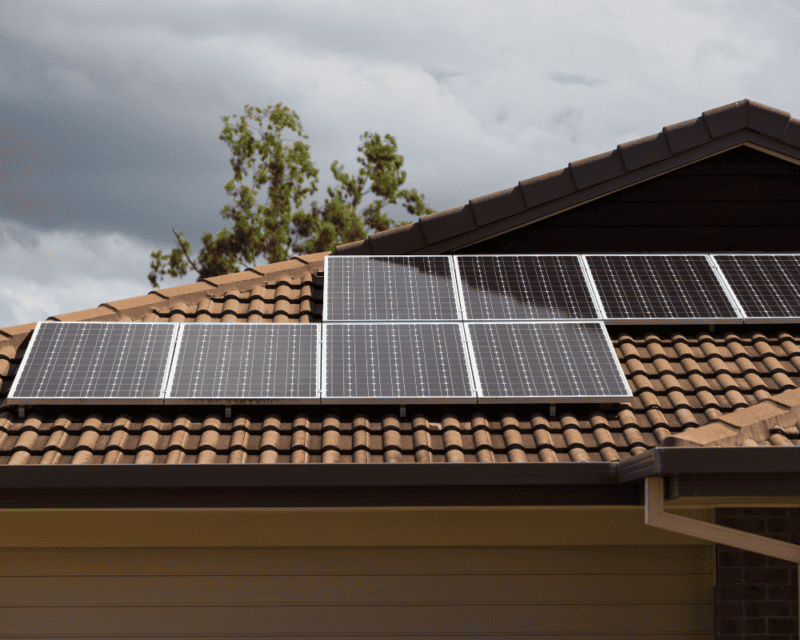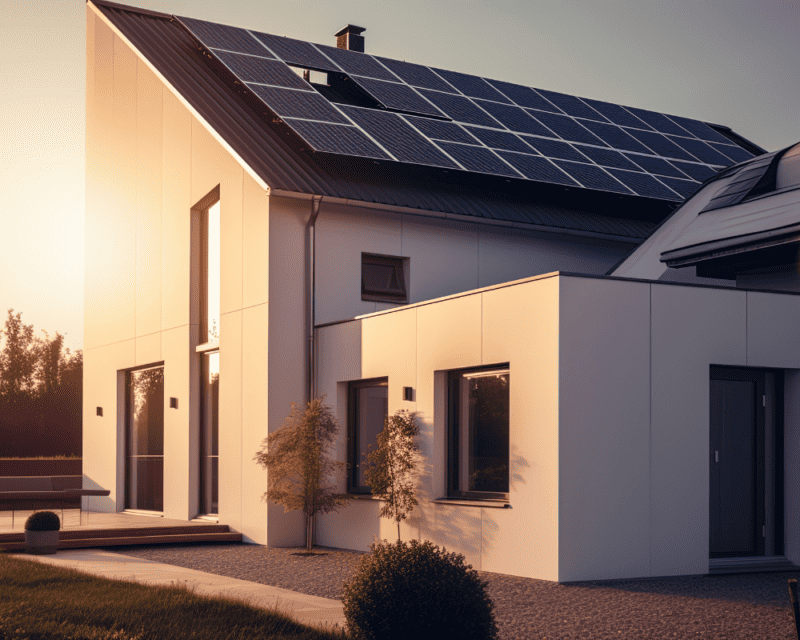Solar panel installations have become increasingly popular in recent years, and they are now a common sight on the roofs of UK homes.
Solar panels also known as photovoltaic (PV) panels or systems harness the sun’s power to generate free, renewable electricity. More people than ever are aware that going solar can help you save money on your energy bills while reducing your reliance on fossil fuels.
If you’re thinking about installing solar panels and you’re not sure whether they are right for you or where to begin finding quotes, this is a guide to help you make the right decisions without any stress.
It’s essential to get at least three quotes to ensure you get the best deal from the right company. Here’s a list of factors you should consider:
Identify reputable local installers

There are plenty of third-party websites where you can find a database of solar PV installers, such as the Renewable Energy Hub which has an inbuilt ratings and review system. Check that companies have positive feedback and reviews before contacting them. You may also want to check Companies House to make sure everything is in order. Local installers may be able to provide you with a more personalised quote as they will be more familiar with any regional regulations in their area, such as conservation restrictions. Make sure that the installation companies that you choose to ask for a quote have the correct accreditations. Although it’s not a legal requirement, your solar PV installer should be MCS accredited which is a guarantee that the solar installer and solar panels meet the highest standards. Solar PV systems must be MCS accredited to benefit from the Smart Export Guarantee (SEG). The Smart Export Guarantee (SEG) enables small-scale low-carbon generators to receive payments from electricity suppliers for electricity exported to the National Grid, providing certain criteria are met. You can verify MCS accreditation on the MCS database online. You can also ask companies for references if you feel it necessary.
Is your roof suitable?

It’s a good idea to check whether your roof is suitable for solar panels. This involves assessing a number of factors.
The orientation and angle of your roof determine how much sunlight your solar panels will receive. The optimal roof angle is between 30 and 45 degrees, with studies suggesting that solar panels at these angles receive maximum sunlight exposure and generate the most electricity.
The way your roof is facing (its orientation) is also important. In the UK, south-facing solar panels will generate more energy than their north-east or west-facing counterparts and will, therefore, save you the most money on your energy bills.
You will also need to consider whether there’s enough space on your roof to install the solar panels you need. The average UK household requires a 4kW system, meaning you’ll need around 29m2 of available roof space.
If you are to make the most of a solar panel system, your roof should not be shaded during peak sunlight hours. (In the UK, this is between 10 am and 4 pm.) If your roof is shaded during this time, you may not be able to generate enough electricity to power your home.
As solar panels add a considerable amount of extra weight to your roof, it’s wise to check whether they are in a sturdy condition before making any purchasing decisions. To give you an idea, a typical UK household requires a 4kW system, which consists of roughly 16 panels and weighs up to 280kg.
You should also be aware of how installing panels can affect your home insurance. You need to tell your insurance provider if you are installing or have installed panels, either when you take out the policy or when you have them fitted. Solar panels are an asset, and installing them is likely to affect the cost of rebuilding your home if required. However, most insurance companies will include solar panel systems as standard and make sure you have sufficient cover to replace them should you need to.
If all this seems too much to work out without the help of an expert, installers are happy to give you an initial quote over the phone and can take a look at your roof from Google Maps to determine whether your roof is suitable. If there are no obvious reasons for not being able to install solar PV, then an onsite visit will be arranged.
Understand your energy needs
Before getting a solar panel quote, you’ll need to check how much electricity you are using and at what times. This will help determine how many solar panels you’ll need to power your property. You can find this information simply by looking at your household bills. If you don’t have an annual summary of the past 12 months’ usage, just contact your supplier, and they’ll let you know the total yearly. To give you an idea of what to expect, according to Ofgem, a three-bedroom house typically uses 2,700 kWh of electricity per year. The more electricity your home consumes, the more panels you will need. If you have low daytime usage but high nighttime usage, then a battery system may be a good option so that you can store the electricity generated during the day that hasn’t been used. It’s worth working out whether the expense of a battery is worthwhile, bearing in mind what capacity battery storage you might need and how much you would potentially receive from sending surplus electricity back to the grid with the Smart Export Guarantee. Installers will design a system to meet your needs, but it’s good to have an idea of system size before you go ahead with the quotations.
Consider the payback period
Unless you’re solely driven by wanting to lower your carbon footprint, you will most likely be hoping for a return on your investment. With energy costs being much higher than compared to previous years it’s an ideal time to install a solar PV system. Installers can help you work out your pay-back period. The calculation will be based on the expected output of your solar panels over time against the current and projected cost increase of electricity from the grid. Installers will usually factor in a 5-10% increase in the annual cost per unit of electricity when working out the pay-back period, so it’s wise to check that this hasn’t been inflated. The figures should be clear and concise.
Although solar panels are much cheaper than they used to be, they are still a significant financial outlay. You can expect to pay between £4,000 and £8,000 for your solar PV system, depending on the size of your home and your energy requirements. The average payback period for solar panels is 7 – 10 years but can vary depending on your solar costs, electricity rate, and available incentives. To get a rough estimate of your solar payback period, divide the net cost of going solar by your annual savings (your current electricity costs). As solar panel systems can last for 25 years or more, you are looking at many years of free electricity. Factors that will affect how quickly your solar panels pay for themselves include the amount of sunshine your area gets, the size and position of your roof and the number of panels installed, the price of electricity, and the Smart Export Guarantee (SEG) tariff (this is the amount of money you will be paid for electricity sent back to the grid) and the amount of electricity your solar system generates.
Is your electricity consumption going to increase soon?
It’s wise to consider whether you are likely to switch to an electric heating system such as an electric combi boiler or an air source heat pump or if you’re thinking of installing an electric vehicle charging point sometime in the near future, as this would dramatically increase your electricity bills. You will need a quote for a solar panel system that covers your new energy needs.
What types of solar panels will you need?

There are three main types of solar panels that may suit your needs. Monocrystalline solar panels tend to be the most expensive but are popular due to their high-efficiency rating of 15% -24%, and they are more aesthetically pleasing than other panels. Polycrystalline solar panels are usually more affordable than monocrystalline panels, but the average efficiency rating of these is much lower, at 13% – 16%. They are, however, more eco-friendly as the manufacturing process avoids wasting precious materials. Thin film solar panels are flexible solar sheets that are created by placing several thin layers of photovoltaic material on top of each other. Although they’re handier for small or mobile properties, the efficiency rating is much lower, usually between 7% and 13%.
What should a quote include
Based on the site evaluation and energy analysis, installers will design a tailored solar system proposal for you. Quotes should include both a detailed design of the solar PV system and an itemised breakdown of costs. The design should contain information on the system’s size, the number and arrangement of panels, the inverter system, and details on any other components, such as diverters for domestic hot water and battery systems. The costs and the make and model of all components should be included. The proposal should also give you the estimated energy production and the installation cost. Their financial analysis should include potential cost savings and export credits along with an explanation of the solar system’s return on investment and payback period.
You then need to compare the different quotations. Take time to consider any applicable warranties and maintenance agreements the installers are offering. It’s also worth checking whether the installers charge for callouts if there is a problem, which might be the case if they are not local to you.
Hopefully, the process of obtaining quotes for the installation of a solar PV system will be less daunting now, and you will feel more confident about the process. There has never been a better time than now to install solar PV, so if you are looking for ways to save money and help the planet, please give us a call at the Renewable Energy Hub, and we can answer any questions you may still have. We can also put you in touch with at least three reputable installers.
